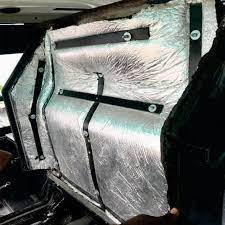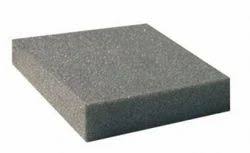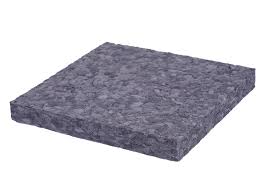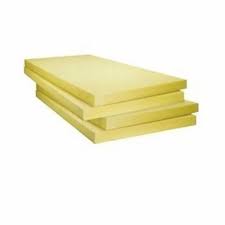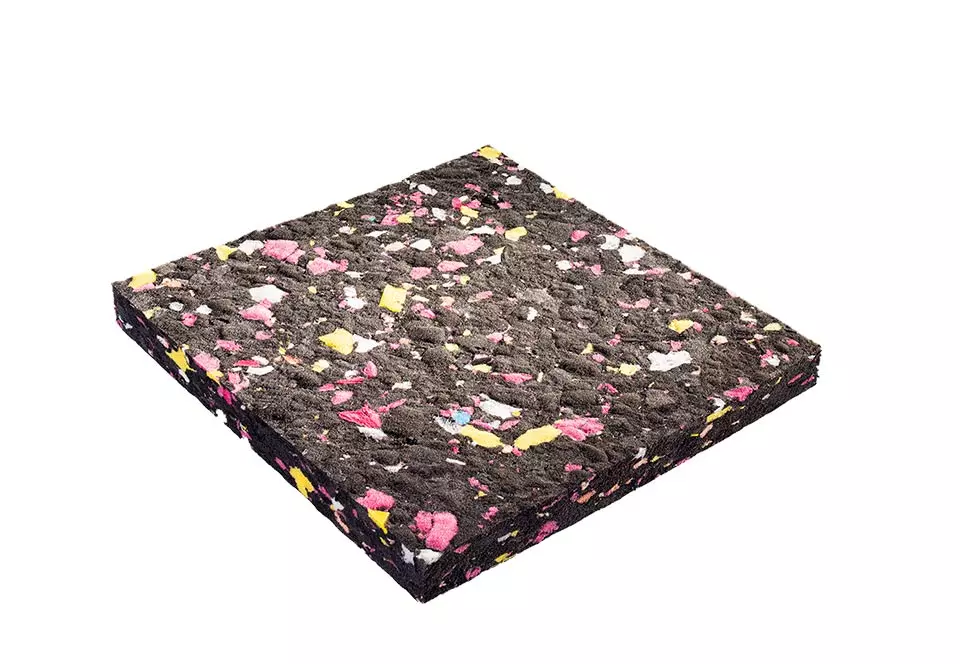Automobile
Foam has a wide range of applications in the automobile industry, including in seats, headliners, door panels, carpets, floorboards, engine compartments, and other areas where sound insulation, cushioning, or safety is required. Different types of foam are used depending on the specific application, such as polyurethane foam for seats and headliners, acoustic foam for reducing noise levels, fire retardant foam for preventing fires from spreading, and EPDM foam for sealing and weatherstripping.
Why Foam is Used in Automobile Industry
Foam is used in the automobile industry for a variety of reasons, including sound and vibration insulation, comfort, and safety. Different types of foam, such as polyurethane, polyethylene, acoustic, and fire retardant, are used to achieve specific goals, such as reducing noise levels, providing cushioning and support, preventing fires from spreading, and improving the overall driving experience. Foam is a versatile material that can be molded into different shapes and sizes, making it an ideal material for creating custom-fit components in the automotive sector. Overall, foam plays a crucial role in enhancing the comfort, safety, and performance of vehicles.
Comfort
One of the primary applications of foam in the automobile industry is to enhance comfort. Foam is used to create seats that provide excellent cushioning, support, and shock absorption. The foam used in seats is typically made from polyurethane foam, which is a durable, lightweight, and versatile material. Polyurethane foam can be molded into various shapes and densities to provide optimal comfort and support. Foam seats also help reduce vibrations, which can make driving more comfortable and reduce driver fatigue.
Safety
Foam is also used in the automobile industry to enhance safety. For example, foam is used in airbags to provide cushioning and prevent injuries in the event of an accident. Foam is also used in headliners to provide additional cushioning and prevent head injuries in the event of a collision. In addition, foam is used in door panels and dashboard padding to provide additional protection in the event of a crash.
Weight reduction
Foam is also used in the automobile industry to reduce weight. Lightweighting is an important goal in the automobile industry, as it can improve fuel efficiency and reduce emissions. Foam is a lightweight material that can be used to replace heavier materials such as metal and wood. For example, foam can be used to replace metal in seat frames, which can reduce the weight of the seat and improve fuel efficiency.
Noise reduction
Foam is also used in the automobile industry to reduce noise. Noise reduction is an important factor in the comfort of a vehicle, as excessive noise can make driving less enjoyable. Foam can be used to dampen noise from the engine, road, and wind. For example, foam can be used in the hood liner to reduce noise from the engine. Foam can also be used in the door panels to reduce noise from the road. In conclusion, foam has numerous applications in the automobile industry. Foam is used to enhance comfort, safety, and reduce weight and noise. The use of foam in the automobile industry has several benefits, including improved fuel efficiency, reduced emissions, and improved driving comfort. Polyurethane foam is a versatile material that can be molded into various shapes and densities to provide optimal comfort and support. As the automobile industry continues to evolve, the application of foam is likely to become even more widespread.
Automobile Industry Foam Applications
Different types of foam are used in the automobile industry for various applications. Here are some of the most common foams used in the automobile industry:
Polyurethane Foam:
Polyurethane foam is one of the most commonly used foams in the automobile industry. It is used in various applications, including seats, headrests, armrests, and interior padding.
Polyurethane foam is a lightweight, durable, and versatile material that can be molded into various shapes and densities to provide optimal comfort and support.
Polyurethane foam is made by mixing polyols and isocyanates, which react to form a foam that expands and solidifies. The density and hardness of the foam can be adjusted by changing the proportions of the polyols and isocyanates. This allows for a wide range of foam densities and firmness levels, which can be customized for different applications.
In seats, polyurethane foam is used to provide cushioning, support, and shock absorption. The foam can be molded into various shapes and densities to provide optimal comfort and support for the driver and passengers. The foam is also used in headrests, armrests, and other interior components to enhance comfort and reduce fatigue.
Polyurethane foam is also used in interior padding to provide sound insulation and reduce noise levels. The foam can absorb vibrations and reduce noise from the engine, road, and wind. This improves the overall driving experience and reduces driver fatigue.
Overall, the use of polyurethane foam in the automobile industry is essential to provide comfort, safety, and reduce weight and noise levels. The versatility and customizable properties of polyurethane foam make it an ideal material for various applications in the automobile industry.
Polyethylene Foam:
Polyethylene foam is another common type of foam used in the automobile industry. It is a lightweight and flexible material that provides excellent sound and heat insulation, making it ideal for various applications in the automotive sector.
Polyethylene foam is used for soundproofing and insulation in the automobile industry. It can be used to line the engine compartment and interior of the car to reduce noise levels and vibrations from the engine, road, and wind. This improves the overall driving experience and reduces driver fatigue.
Polyethylene foam is also used as a protective packaging material for automotive parts during transport. The foam can absorb shocks and vibrations during transportation, protecting the parts from damage.
In addition, polyethylene foam can be molded into various shapes and sizes, making it an ideal material for creating custom-fit floor mats and trunk liners. The foam provides a comfortable and durable surface that is easy to clean and maintain.
Acoustic Foam:
Acoustic foam, also known as sound-deadening foam, is widely used in the automobile industry for noise reduction and soundproofing. It is designed to absorb sound waves and reduce noise levels, making the interior of the vehicle more comfortable and less fatiguing for the driver and passengers.
Acoustic foam is used in various applications in the automobile industry, including in door panels, headliners, and floorboards. It can also be used to line the engine compartment and other areas of the car where noise is generated.
The foam's unique properties make it an ideal material for soundproofing and noise reduction. The foam's open-cell structure allows it to absorb sound waves and convert them into heat, reducing noise levels inside the vehicle. Additionally, acoustic foam is lightweight, flexible, and durable, making it easy to install and long-lasting.
Apart from noise reduction, acoustic foam can also help to improve the quality of sound within the vehicle. It can enhance the clarity and quality of audio systems by reducing the level of background noise and echoes.
Overall, the use of acoustic foam in the automobile industry is essential for creating a comfortable and quiet interior environment for the driver and passengers. The foam's unique properties make it an ideal material for soundproofing and noise reduction, improving the overall driving experience.
Fire Retardnat Foam:
Fire retardant foam is an important safety feature in the automobile industry. In case of a fire, the foam can prevent the flames from spreading and provide additional time for occupants to escape safely.
Fire retardant foam is used in various applications in the automobile industry, including in seats, carpets, and headliners. It can also be used to line the engine compartment and other areas of the car that are susceptible to fires.
The foam's fire retardant properties make it an ideal material for preventing fires from spreading. It contains special chemicals that slow down or prevent the ignition of the foam, which can give occupants extra time to escape in case of a fire. Additionally, fire retardant foam can also reduce the amount of toxic smoke that is produced during a fire, which can improve the chances of survival for occupants.
Overall, the use of fire retardant foam in the automobile industry is essential for improving the safety of the vehicle and its occupants. The foam's ability to prevent the spread of fires and reduce the amount of toxic smoke produced during a fire can make a significant difference in the event of an emergency.
EPDM Foam and Gaskets:
EPDM (Ethylene Propylene Diene Monomer) foam and gaskets are widely used in the automobile industry due to their excellent weather and ozone resistance. EPDM foam is a closed-cell foam that is highly durable and resistant to UV radiation, ozone, and weathering. It is commonly used in applications such as weatherstripping, door seals, and gaskets.
EPDM gaskets are also widely used in the automobile industry for sealing purposes. They are commonly used in engines, transmissions, and other components to prevent oil and fluids from leaking. The gaskets are highly resistant to heat, oils, and chemicals, making them ideal for use in the automotive sector.
EPDM foam and gaskets provide excellent sealing properties and durability, making them ideal for use in harsh environments. The foam's closed-cell structure makes it resistant to water and other fluids, and its excellent weather resistance ensures that it will not degrade over time, even in extreme conditions.
Overall, the use of foam in the automobile industry is essential to provide comfort, safety, and reduce weight and noise levels. The selection of foam type depends on the specific application and the desired properties of the foam, such as durability, flexibility, and resistance to heat and chemicals.
FAQ's
Lorem ipsum dolor sit amet, consectetur adipiscing elit.
Lorem ipsum dolor sit amet, consectetur adipiscing elit.
Lorem ipsum dolor sit amet, consectetur adipiscing elit. .
Lorem ipsum dolor sit amet, consectetur adipiscing elit. .
Lorem ipsum dolor sit amet, consectetur adipiscing elit. .
Lorem ipsum dolor sit amet, consectetur adipiscing elit. .


